We home theater fans can be nit-picky types, sometimes obsessing over pixel-by-pixel imperfections in the latest Blu-ray releases. One such controversy erupted at the end of May when Stanley Kubrick’s ‘Barry Lyndon’ was released on the format in an aspect ratio slightly different than what people assumed it should be. After much arguing, a definitive answer has finally been uncovered.
I’m not kidding when I say that we’re talking about a slightly different aspect ratio. It had long been assumed that Kubrick’s preferred projection ratio for the movie was the old European 1.66:1 standard. Legend had it that he’d even gone so far as to ship the appropriate projection mattes to theaters that were not equipped for that ratio. (1.66:1 was largely supplanted by the wider American standard of 1.85:1 by the time ‘Lyndon’ was released in 1975.)
Previous VHS, Laserdisc, and DVD editions of the movie were released at an aspect ratio of about 1.60:1 (not a typo), which appears to be the fully exposed camera negative. In a move that was unusual for the time, Kubrick shot ‘Barry Lyndon’ with hard mattes in the camera to prevent the full 1.37:1 film frame from being exposed to light. Essentially, this means that the movie is letterboxed on the camera negative itself.
Warner Bros. released ‘Barry Lyndon’ on Blu-ray this year simultaneously with ‘Lolita‘ and ‘A Clockwork Orange‘, both of which are presented on disc in the expected 1.66:1 ratio with small pillarbox bars on the sides of the 16:9 high-def frame. Yet for some reason, ‘Barry Lyndon’ is instead slightly cropped on the top and bottom of the picture to fill the 16:9 (1.78:1) screen with no pillarboxing.
Let me be clear that the difference between 1.66:1 and 1.78:1 is pretty small. In high-definition terms, it amounts to a loss of about 38 pixel rows (out of 1,080) off of each the top and bottom of the frame (76 total). A difference this small falls well within the expected projection tolerances at most commercial cinemas. In fact, the ‘Barry Lyndon’ Blu-ray looks perfectly fine at 1.78:1. No picture information appears to the eye to be missing or uncomfortably cramped. A viewer who didn’t know about this controversy in advance would no doubt never suspect that anything was wrong.
However, Stanley Kubrick was a notorious perfectionist who expected things to be done to his exacting standards. For this reason more than any other, some fans of the film were outraged at this change in aspect ratio, no matter how negligible.
So, why did Warner Bros. change the aspect ratio in the first place? It turns out that this was done at the instruction of Kubrick’s personal assistant of many years, Leon Vitali, who has discretion from the Kubrick estate to supervise the video presentations of the director’s films. Vitali insists that, contrary to popular belief, Kubrick’s intended aspect ratio for ‘Barry Lyndon’ was in fact 1.77:1 all along (again, not a typo), and that stories of his instructions to theaters that the movie be projected at 1.66:1 were purely apocryphal and never really happened. Ever since the Blu-ray was released, he has been adamant that Kubrick hammered the point home to him on countless occasions that 1.77:1 was the proper aspect ratio for ‘Barry Lyndon’.
That would seem to resolve this debate, wouldn’t it? Unfortunately, no. You see, Vitali has proven over the years to be an unreliable source of technical information when it comes to the presentation of Kubrick’s movies. Back in 2001, during an interview with DVDFile to promote Warner’s DVD editions of Kubrick’s films, Vitali defended the choice of 4:3 aspect ratio transfers for movies like ‘The Shining’ and ‘Full Metal Jacket’. He later contradicted himself and now says that these same movies should be 1.66:1. (Warner’s Blu-ray editions that Vitali presumably supervised are actually 1.78:1 like ‘Barry Lyndon’.)
In that old interview, Vitali was also asked why ‘A Clockwork Orange’ was issued on DVD in a non-anamorphic letterbox 1.66:1 transfer, even though an anamorphically enhanced transfer at the same aspect ratio would have provided better detail and clarity. He stated that anamorphic enhancement “alters perception” of the movie and that Stanley Kubrick never wanted his movies to be presented on DVD with anamorphic enhancement. It’s very clear that Vitali had no idea what anamorphic enhancement even was. He seemed to think that it somehow equates to changing the camera lens years after the movie was shot and completed. This is of course complete gibberish.
(The original interview has been purged from DVDFile due to mismanagement by the site’s current owners. If this Web Archive link doesn’t work, I can provide the text of the article.)
If that isn’t enough to cast doubt on Vitali’s authority to determine the proper aspect ratio for ‘Barry Lyndon’, film critic Glenn Kenny has found the smoking gun that should provide a definitive answer to this question. One of his sources dug up the following letter that Stanley Kubrick sent to theater projectionists upon the film’s release in 1975. (Click to enlarge.)
The letter explicitly states:
“Barry Lyndon” was photographed in 1-1.66 aspect ratio. Please be sure you project it at this ratio, and in no event at less than 1-1.75.
Note that “less than” refers to the height of the frame. A lesser height would mean more matting and a wider image.
This then serves as confirmation that Stanley Kubrick’s preferred aspect ratio for ‘Barry Lyndon’ was indeed 1.66:1, but that extra matting down to a ratio of 1.75:1 would still be considered acceptable (though not ideal). What he did not want to see was the movie masked all the way down to 1.85:1, which was the expected practice for theaters at the time (and still is).
At 1.78:1, the Blu-ray edition is so close to that acceptable limit that (in my opinion) it’s not worth quibbling over. I wish that the Blu-ray had been pillarboxed to Kubrick’s preferred 1.66:1 as ‘Lolita’ and ‘Clockwork Orange’ are, but the disc is certainly not “butchered” or “unwatchable” (hyperbole thrown around by some of the disc’s most vocal critics).
With this evidence now in hand, has Leon Vitali owned up to his mistake? Of course not. In his latest interview, Vitali continues to insist that the movie was photographed at 1.77:1 (which it plainly wasn’t, or the older DVD transfer wouldn’t have more picture information at the top and bottom of the frame than the Blu-ray), and that is the correct presentation ratio for the movie. His arguments make less and less sense the more he talks. Honestly, I think that he’s confused as to the fact that 1.77:1 is a wider ratio than 1.66:1. The way he explains it, he appears to believe the opposite.
The greatest irony in all this? ‘Barry Lyndon’ is perpetually one of Stanley Kubrick’s least popular movies, owing to the fact that it’s so deadly boring. Even in a best case scenario, the Blu-ray would be lucky to sell a couple thousand copies nationwide, if even. The people who would be inclined to buy it are the Kubrick fanatics who demand that the director’s wishes be followed to the letter. This trivial aspect ratio issue, that would be so inconsequential for any other movie in the studio’s catalog, has probably lost Warner Bros. about half those sales.

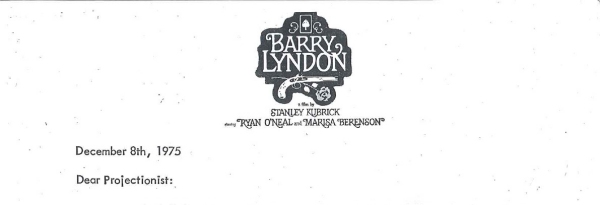
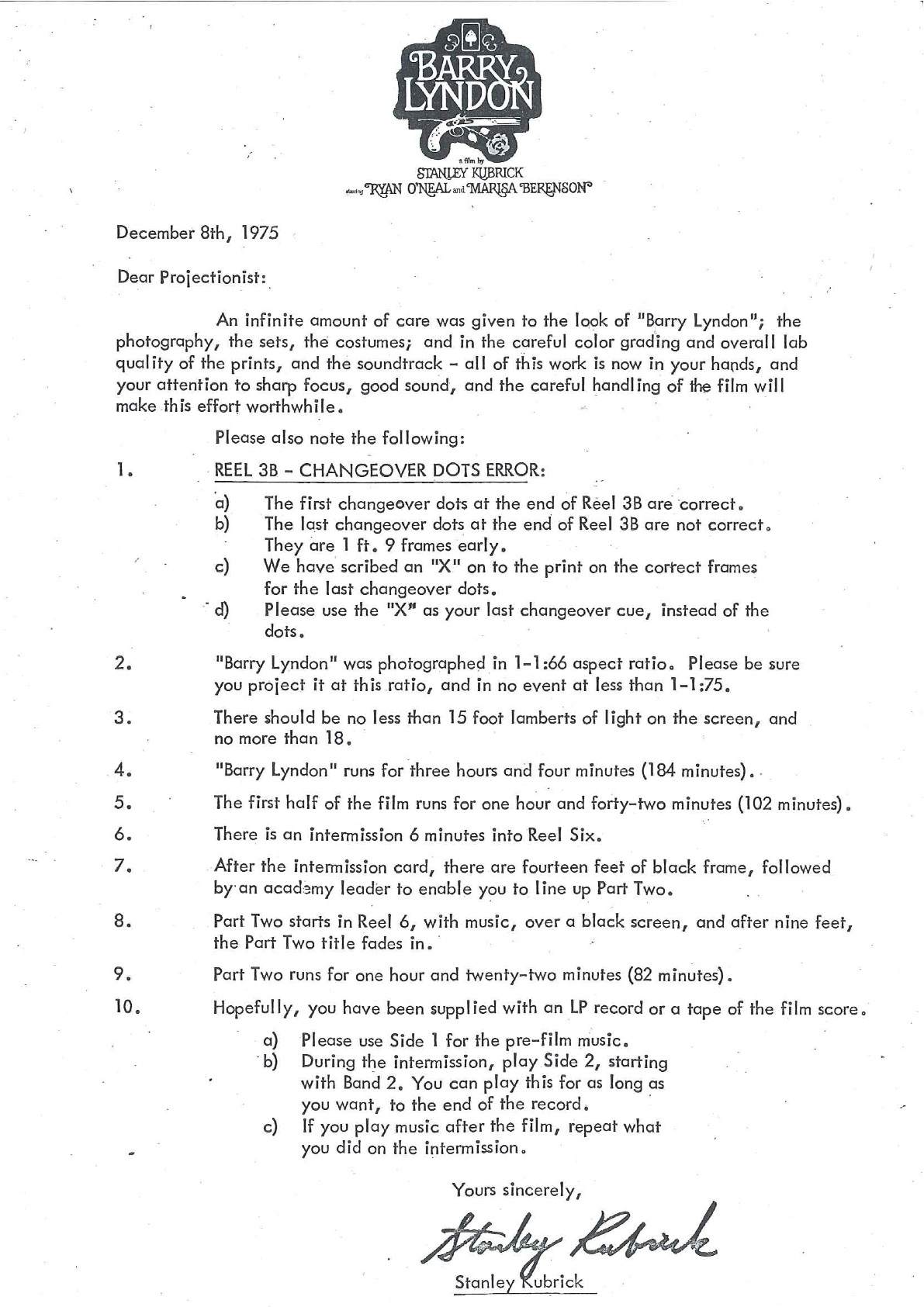
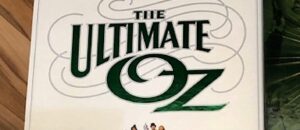
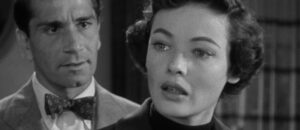
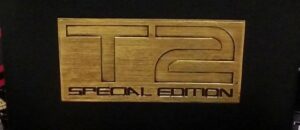

Tim Tringle
I remember years ago when I went to purchase a copy of Full Metal Jacket on DVD and discovered it and many of Kubrick’s classics were non-anamorphic. I was so stunned I researched it and read that it had been Kubrick himself who demanded that his movies not appear in anamorphic DVD. Since he was alive well into the DVD era I though maybe this was true. Now I find that it’s an Assistant, who obviously has no practical experience with the vast history of aspect ratios, and even less experience with modern technology. I even wrote an e-mail to Bill Hunt about it.
Very strange that this man keeps talking about stuff as an authority when it’s pretty obvious that he is not only incorrect but is likely to damage these historical films in the future if anybody listens to him. It’s people like these that end up destroying films by not caring for them properly or giving bad advice.
Shannon Nutt
Great LAST paragraph Josh…if you hadn’t said so, I was going to post that this whole aspect ratio debate is far more interesting than anything in the film. To this day, I can’t watch it in one sitting. It’s a snooze-fest.
Dail Whiteley
i cant wait for the version in teal. 🙂
Darrel Eddings
i guess i’m a freak, i like Barry Lyndon. A Lot. i can see why most wouldn’t, as it is dreadfully slow in places, but i feel it’s under-appreciated.
imo, the cropping isn’t a deal breaker for me,as the film has and most likely won’t {even at the ratio that Kubrick stated} look any better. Looking forward to The Killing in August {with Killer’s Kiss}.
Gareth Callenby
Leon Vitali plays Lord Bullingdon in Barry Lyndon. I think everyone should compare the two aspect ratios to see what Vitali is trying to hide about his performance.
This whole “controversy” is probably a calculated scheme to hide an errant knee movement in one of the shots.
gianluca
Well, the last paragraph demonstrates indeed as you know very little about cinema, period.
A pity, the above explanation was quite exhaustive and clear: just do not try to overdue, fly down and safe.
Josh Zyber
AuthorTo each their own. I’m a fan of most of Kubrick’s films, but Barry Lyndon taxes my ability to stay conscious and alert.
Chris B
I’ve always felt the same way about “A Clockwork Orange”. I like most of Kubrick’s stuff but I loathe pretty much everything about that particular film….Different strokes I suppose…
Hank Jansen
As a painter studying Kubrick for composition in a 1.66:1 frame, I thank you for setting this straight. Here’s a tip: when the story gets slow, let your eyes wander the scene and the light. Masterful.
Michael Hickey
Your article is interesting, accurate and useful–until your extraneous assertion that “Barry Lyndon” is “deadly boring.” In an article that concerns itself throughout with ascertainable fact, this ad hoc intrusion of personal critical opinion at the very end, and such a wrongheaded opinion at that, is terribly out of place. “Barry Lyndon” is arguably among the most ambitious films by one of the most challenging and innovative artists in the medium’s history, one which has only recently begun to receive its inevitable and long-awaited critical re-evaluation and appreciation. As its reputation continues to grow, dismissals such as yours are quickly being consigned to the dustbin of careless movie criticism, where they will whither in ignominy alongside the “Boos” which greeted the mention of “Citizen Kane” at the 1941 Academy Award ceremony. I have seen “Barry Lyndon” about twenty times, the first ten or so times in theaters. After many conversations on the subject, I have concluded that it is exactly as boring as the person viewing it.
Josh Zyber
AuthorSee my response to “gianluca” above. I would say the same to you as I said to him. I really wanted to like Barry Lyndon, but despite several attempts, the film defies my ability to do so.
Regardless, if you excise the “deadly boring” portion of that sentence in my article, my statement that Barry Lyndon is one of Kubrick’s least popular and poorest-selling films is accurate, and my point still stands.
Mrak
I’m revisiting this post again after the Netflix release of “Filmworker”. I think the dismissal of Vitali’s expertise was maybe a bit harsh, as he seems completely capable of parsing technical specs, and Kubrick himself trusted him with these things.
Two points occur to me, though: 1) Vitali claims that Kubrick applied a 1:1.77 matte to Lyndon whenever they were working with it. This is perfectly compatible with the letter Kubrick sent to projectionists. Vitali was not involved in the editing of the film. He didn’t begin his production working relationship with Kubrick until The Shining. But he WAS involved in future exhibitions of the film. Kubrick would know that his preferred 1:1.66 ratio is fine–that’s how he photographed it, and after the initial edit he would know there are no composition problems–but once the film is finished and is being prepared for various future exhibitions, he may have wanted to see the most extreme possible projection ratio. He told the theaters that 1:1.75 is the most extreme allowable ratio, and then as he was preparing prints with Vitali they watched it at 1:1.77… a slightly more extreme ratio to give a bit of safety at the edges. This all makes sense. Vitali, then, could be mistaking the ratio at which Kubrick was checking the film, 1:1.77, for the IDEAL ratio at which he’d like it to be projected in theaters, 1:1.66. I think that is an understandable mistake of memory on Vitali’s part, especially since he had nothing to do with the edit. Though it’s still incredibly frustrating that this mistake would be applied to the bluray, since it’s a mistake the removes image from the film.
Regarding the question of “anamorphic” vs. full-screen… Setting aside the technical confusions about “anamorphic enhancement”as this article calls that encoding process vs. anamorphic photography vs. the erroneous use of the term for letterboxing on VHS tapes… I seem to remember an old interview from the 90’s with Kubrick in which he said that on video he preferred certain of his films, namely Jacket and The Shining, to fill more of the television frame. To him, this was the most powerful possible image for that terrible medium of 4:3, low-resolution televisions, and the original negative of those films contained more acceptable image on the top and bottom, so it was possible to simply fill the screen up with more original negative. Whereas with 2001, for example, you would have to crop the sides to fill a 4:3, therefore letterboxing was preferred. Personally, I think he was right about all of that, and in fact, for me it was cool as hell to see MORE picture on the top and bottom of those films. Now that all televisions are 16:9 1080p, which is close to 2K, and many people have personal theaters, it seems reasonable to assume that he would have preferred the theater-presentation aspect ratio for bluray release, as opposed to his preferred “home-video” aspect ratio.
Johnny Walker
Well said.
Tom
Wow such an ignorant ending by this young writer on an otherwise good analysis… Too bad.
Josh Z
Young writer? I’m flattered.